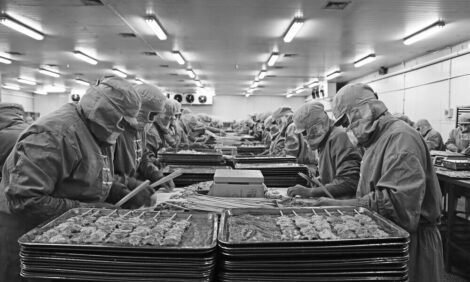



Process improves strength, color of feather-based fibers
Chicken feather-derived fibres could reduce the US market share of petroleum-based fibres by 10%Domesticated chickens in the United States alone produce more than 2 billion pounds of feathers annually, said a recent news article from the University of Nebraska-Lincoln. Those feathers have long been considered a waste product, especially when contaminated with blood, faeces or bacteria that can prove hazardous to the environment.
University of Nebraska-Lincoln scientist Yiqi Yang is among a growing cadre of researchers looking to transform those feathers into fibres that find a place in natural fabrics. In that vein, Yang and his Husker colleagues are devising and testing methods to improve the properties of feather-derived fibers.
Those methods include cross-linking: chemically bonding long protein chains — including keratin, a water-resistant protein of feathers — to bolster the performance of the resulting fibers and fabrics. But that performance must still improve, and unwanted side effects of cross-linking be resolved, before feathers emerge as a greener alternative to petroleum-based materials — polyester, nylon — currently dominating the market.
In a recent study, Yang’s team experimented with a cross-linking class known as saccharide aldehydes. By modifying the molecular structure and concentration of the aldehydes, the team developed keratin fibers substantially stronger than those produced via another popular cross-linker, citric acid.
Those fibers possessed 90% of wool’s strength after long-term immersion in water and 120% of wool’s strength under dry conditions. Importantly, those fibers retained their color and boasted a capacity to absorb dyes that far exceeded that of other cross-linked, keratin-based fibers. The production process also yielded none of the toxic formaldehyde that has previously hounded cross-linking processes involving aldehydes.
With further improvements, the team estimates that chicken feather-derived fibres could ultimately reduce the US market share of petroleum-based fibres by 10% — while putting to use an overlooked waste product of the food industry. And given the low cost of feathers, keratin-based fibers would likely cost less than wool, Yang said.









